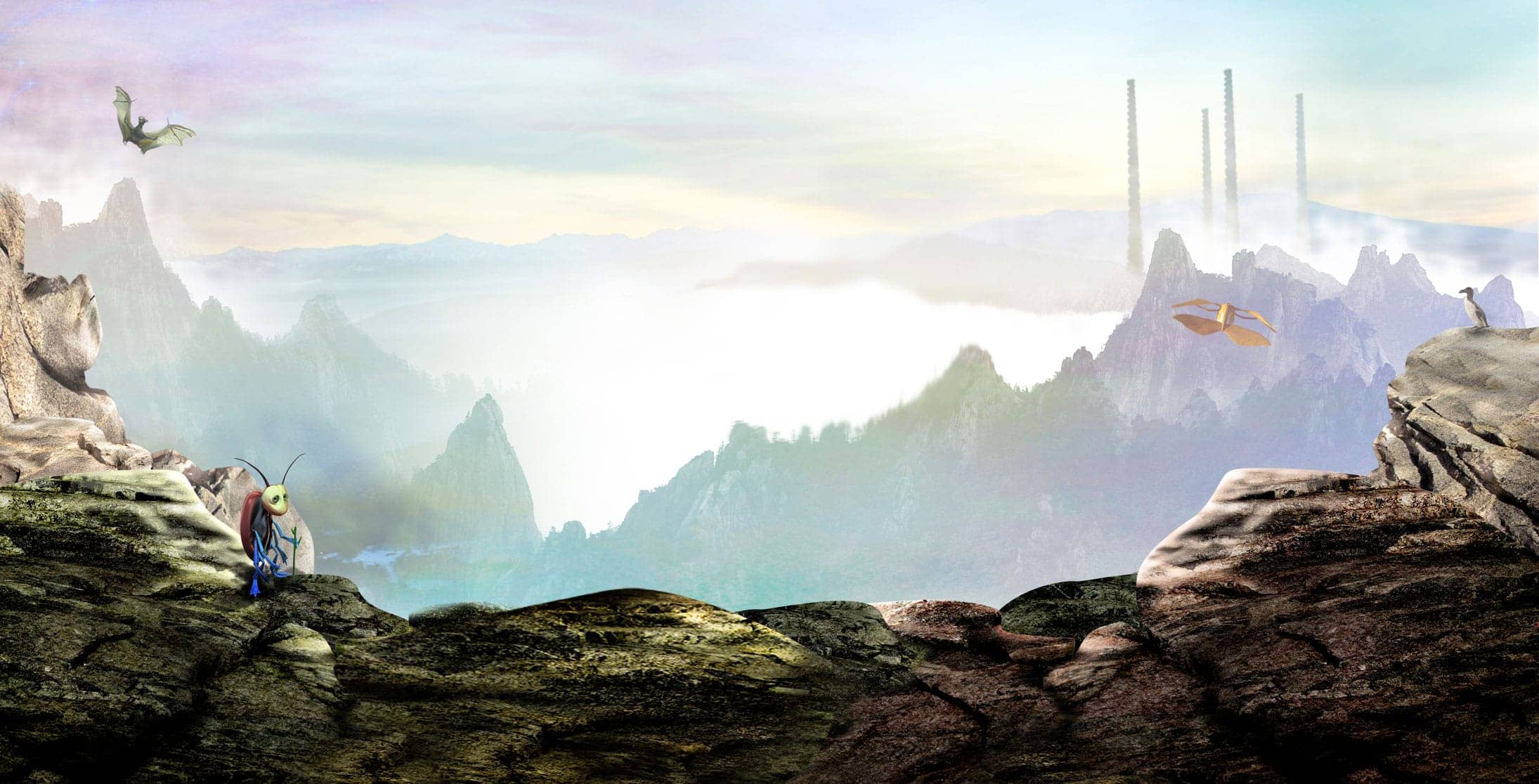In our new podcast series ‘Kid’s Stories, Science & Secrets’ we talk about ugly animals with Simon Watt, president of the Ugly Animal Preservation Society (UAPS). So let’s celebrate these overlooked creatures.
Embracing the Unconventionally Attractive
In the realm of nature, where diversity reigns supreme, beauty often lies in the eye of the beholder. While some creatures, like the majestic lion or the graceful gazelle, capture our attention with their conventional attractiveness, others, often deemed “ugly,” are overlooked and underappreciated. However, these unconventional beauties hold within them remarkable adaptations and ecological significance that deserve our admiration and study.
The Blobfish: A Deep-Sea Dweller with Resilience:
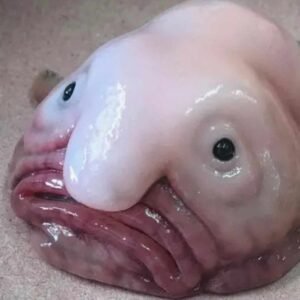
Often dubbed ‘the world’s ugliest animal’, the blobfish inhabits the crushing depths of the ocean, where sunlight is scarce and pressure is immense. Its gelatinous, soft body allows it to withstand the extreme conditions, and its lack of eyes is an adaptation to the darkness. The blobfish thrives in its environment, demonstrating the resilience and adaptability found in the depths of the sea.
Roman Fedortsov, a fisherman from Russia, photographs bizarre-looking creatures at the bottom of the sea and posts them to his Instagram page. He took this photo of the blobfish, but you should have a look at the other creatures he has photographed!
The Aye-Aye: A Madagascan Enigma with Remarkable Abilities:
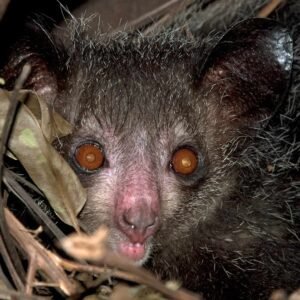
Endemic to Madagascar, the aye-aye is a primate with large eyes, rodent-like incisors, and a long, middle finger that it uses for tapping on trees to locate wood-boring insects. Its unusual appearance and nocturnal habits have earned it a reputation as an ill omen in Malagasy culture. However, the aye-aye plays a crucial role in the ecosystem, controlling insect populations and dispersing seeds.
The Star-Nosed Mole: A Sensory Marvel
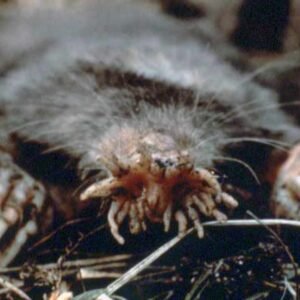
The star-nosed mole, found in North America, possesses a unique sensory organ on its nose, shaped like a star, that contains over 22,000 touch receptors. This remarkable adaptation allows it to detect prey and navigate its underground world with unparalleled sensitivity. While its appearance may be unsettling to some, the star-nosed mole’s sensory prowess is a testament to nature’s ingenuity.
The Naked Mole-Rat: From the Depths of Darkness
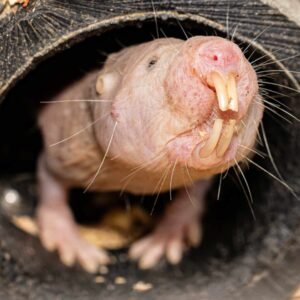
Living in underground colonies in Africa, the naked mole-rat is a remarkable creature known for its longevity, social harmony, and resistance to cancer. Its unique social structure, with a queen at the centre, ensures cooperation and division of labour within the colony. Additionally, its cells have a mechanism that suppresses tumour growth, making it an invaluable subject for cancer research. This is a picture of one at Akron Zoo.
The Marabou Stork: A Majestic Scavenger
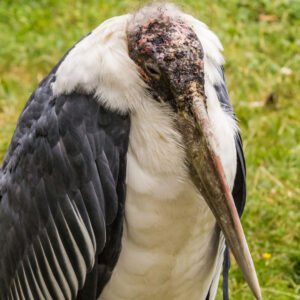
The marabou stork, found in Africa, is a large bird with a long, featherless neck and pouch. While its appearance may not conform to traditional beauty standards, the marabou stork plays a vital role in maintaining ecosystem balance by scavenging on carcasses and reducing the spread of diseases. Its scavenging habits also help recycle nutrients back into the environment.
The Goblin Shark – The Stuff of Nightmares
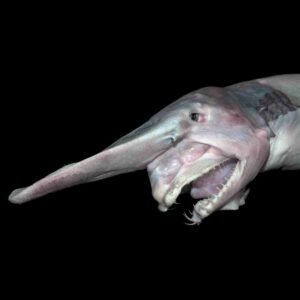
Goblin sharks are slow-moving, ambush predators that use their long, protruding snouts and retractable jaws to catch prey. They have long, serrated teeth that are used to grasp and hold onto their prey. They live deep, deep down in the depths of the ocean where there’s very litt
le light. Which is good because, well, the dark is the best place for them! Goblin sharks are rarely seen by humans (thank goodness), and their biology is still not fully understood. They are considered to be a least concern species by the International Union for Conservation of Nature (IUCN), but their populations may be threatened by deep-sea fishing.
Biomimicry: Learning from Nature’s Innovations:
The unconventional beauty of these creatures goes beyond their physical appearance and extends to their remarkable adaptations and ecological roles. These animals offer valuable insights for biomimicry, the practice of learning from and emulating nature’s designs to solve human challenges.
The uniqueness and diversity of life on Earth are not limited to the most conventionally beautiful creatures. Let’s embrace the unconventional and appreciate the remarkable adaptations that make these overlooked animals so fascinating and important. By looking beyond their appearance, we can gain a deeper understanding of the wonders of nature and the incredible diversity of life that surrounds us. Who knows what secrets these ugly animals hold? The blobfish’s soft body could inspire the development of materials that can withstand extreme pressure. The aye-aye’s sensitive finger could lead to the creation of more precise robotic manipulators. The star-nosed mole’s sensory organ could inform the design of more sensitive sensors.
Appreciating the Unconventional
In the realm of animal conservation, attention often gravitates towards charismatic megafauna like pandas, lions, and elephants, while less aesthetically appealing creatures often fall by the wayside. This disparity in conservation efforts sparked the idea for the Ugly Animal Preservation Society (UAPS), founded by biologist and comedian Simon Watt in 2012.
The UAPS aims to raise awareness and appreciation for animals often overlooked due to their unconventional appearances. These “ugly animals”, as Watt describes them, play crucial roles in their ecosystems and harbour remarkable adaptations that hold the potential for ground-breaking innovations. The so-called ugly animals, with their unique adaptations and ecological significance, deserve our respect and admiration. They are living testaments to nature’s boundless creativity and the importance of embracing diversity in all its forms.
Simon is a guest on episode 13 of our ‘Stories Science & Secrets’ podcast.
Hear it here: https://linktr.ee/StoriesScienceSecrets
Download our FREE Biomimicry Lesson plans here: https://www.rockfordsrockopera.com/biomimicry/
